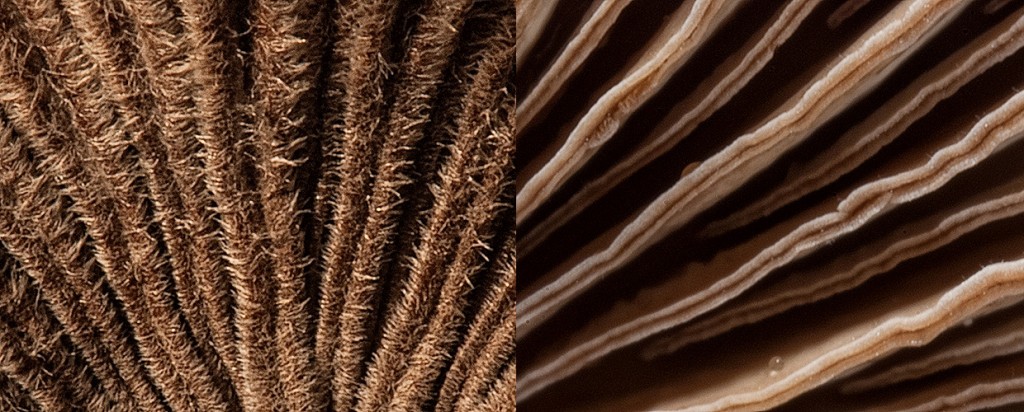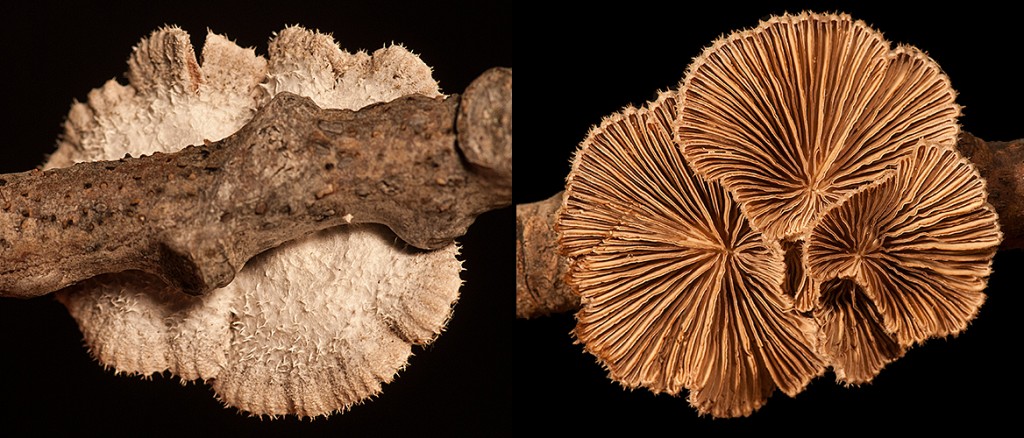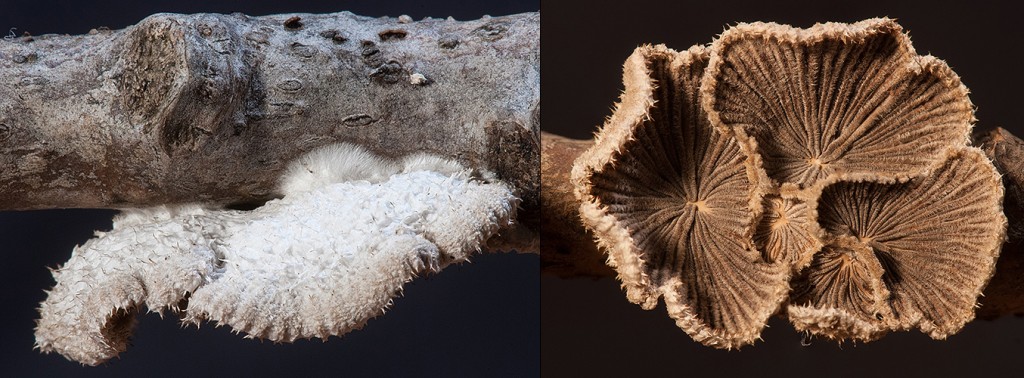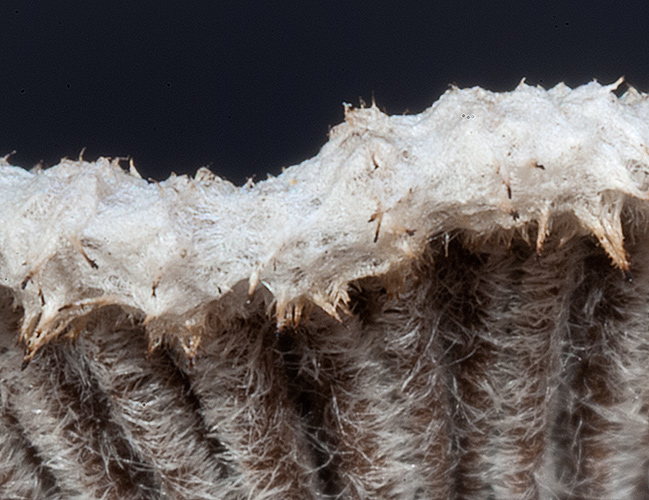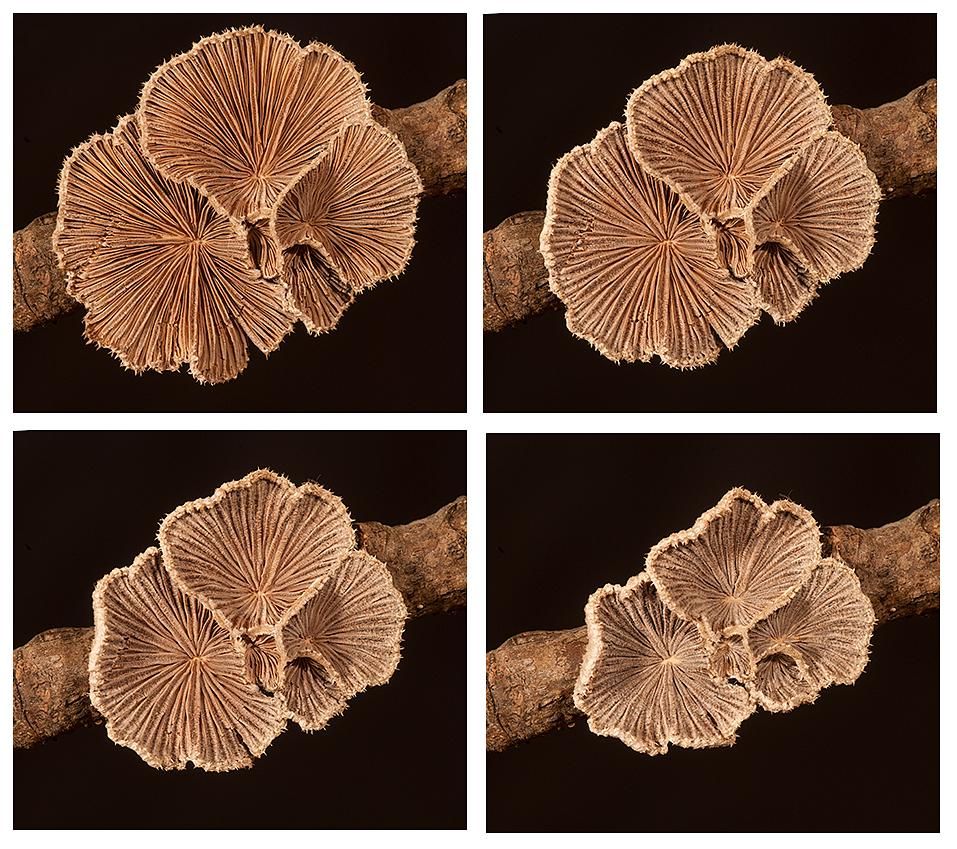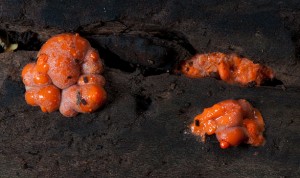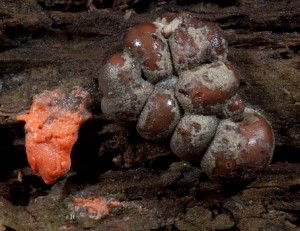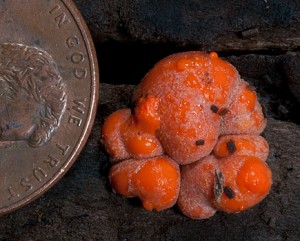Split Gill Fungus (Schizophyllum commune) is one of the world’s most widely spread fungi. Occurring on six continents (except Antarctica), it grows anywhere that dead wood is found. John Raper of Harvard studied this fungus for many years and tried without success to divide it into additional species. The genus does contain a few other local species.
The fruiting bodies are long lived and –in spite of their delicate appearance–can last several years. The gills roll back in dry weather, protecting their spores. David Arora in his book Mushrooms Demystified reports that a specimen was rehydrated and shed spores after being stored for 50-years in a tube. The split gills are distinctive, changing color and shape as they dry and are rehydrated. They radiate from a single point on the undersides of the small shelf-like fruiting bodies. The white to light-brown, hairy upper surface appears to be leathery and inrolls the lower surface.
Split Gill fungus has over 28,000 different sexes. This encourages crossing with non-relative fungus. See Tom Volk’s excellent “Fungus of the Month” page for more details.
I have seen this fungus in several locations in Michigan, and it can be found throughout the winter. Look for it on you winter walks. I thank “Mushroom Mary” for showing me my first specimens.
Copyright 2013 by Donald Drife
Webpage Michigan Nature Guy
Follow MichiganNatureGuy on Facebook

